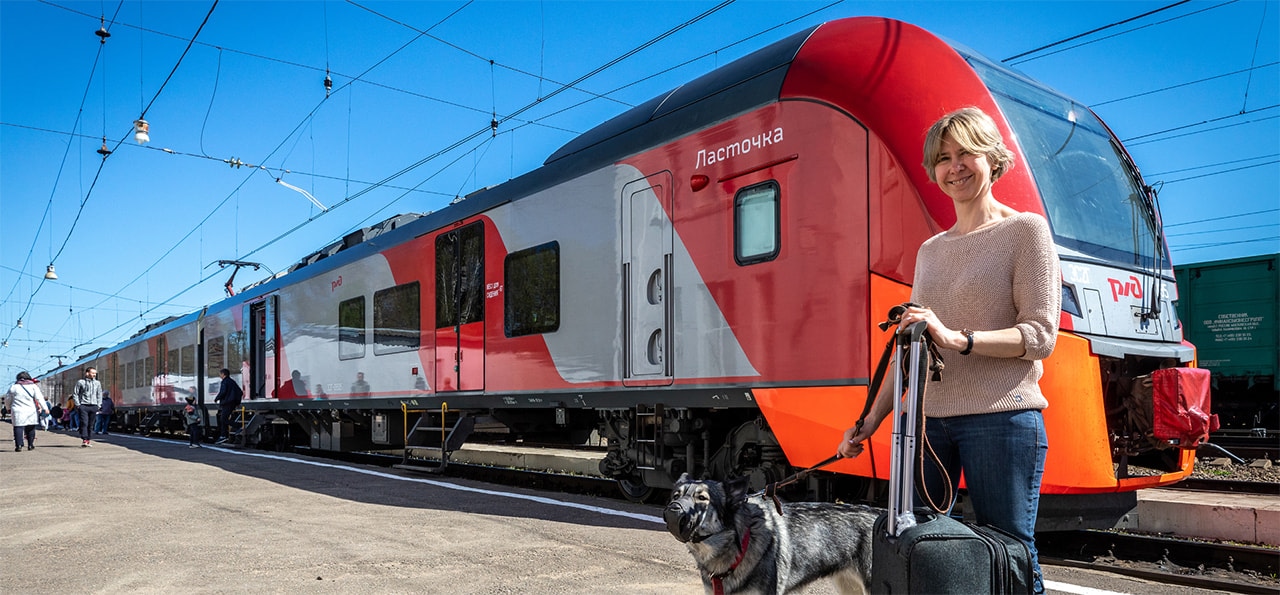Energy efficiency

To achieve our strategic targets in reducing carbon intensity, we take steps outlined in the Energy Strategy through 2030 with an outlook through 2035, annual Energy Savings and Energy Efficiency Programme, industry investment programmes of our branches, and programme of organisational and technical initiatives for 2020–2025Approved by Russian Railways’ Order No. 2651/r dated 27 November 2019..
Key areas in energy saving and efficiency:
- improving the energy efficiency of transportation operations;
- developing the power grid to reduce energy losses and make it more energy efficient;
- using stationary and non‑traction energy more efficiently.
Russian Railways is advancing its energy‑saving initiatives through investment programmes to upgrade fixed assets and the investment project to introduce resource saving technologies in railway transport.
In 2023, the Company went through with all of its essential energy saving activities covering both train traction and stationary units, which made it possible to achieve the targets for energy savings and energy efficiency improvement under the corporate Long‑Term Development ProgrammeOrder No. 466-r of the Russian Government dated 19 March 2019.. In 2023, the energy efficiency of Russian Railways’ operations improved by 0.6% year‑on‑year.
In the reporting year, the Energy Efficiency Programme helped achieve fuel and energy savings of 5,872.4 TJ, or RUB 6.463 bn.
The initiatives to improve energy efficiency of the transportation process served to save RUB 5.3 bn, including 548.3 m kWh of electricity and 50.8 kt of diesel fuel. The bulk of savings was achieved by improving locomotive operations (62.8%) and traffic management (28.8%).
The improved energy performance of traction power supply saved 16.9 m kWh, or RUB 70.6 m, while that of stationary power facilities saved RUB 1.2 bn, including:
- RUB 466.9 m in fuel and energy savings across thermal generation facilities and heating systems;
- RUB 208.6 m in fuel and energy savings across processes and infrastructure;
- RUB 189.3 m in savings from introducing LED systems, using energy‑efficient lights, and optimising lighting operation.
Russian Railways utilised its Energy Efficiency automated information system to manage energy efficiency initiatives across it operations. This included the decomposition of performance targets for the structural units of Russian Railways branches, the adjustment of their implementation programmes, and the quarterly monitoring of the efficiency of the technical solutions and technologies used. The system was leveraged by employees from more than 2,187 structural units of the Company’s branches operating in 77 regions across the country.
Summary data on the achievement of fuel and energy savings targets by Russian Railways branches in 2023 are shown in Tables 1 and 2 of the Annex to the Energy Efficiency section.
In 2023, the Company’s investment project to introduce resource‑saving technologies in railway transport covered the launch of 410 technical solutions worth RUB 0.8 bn, including:
- deployment of 270 resource‑efficient onboard locomotive systems (81 wheel‑slip protection solutions and 189 driver information systems);
- IoT‑based upgrade to improve energy efficiency of lighting systems at the Gukovo station;
- supply of lighting equipment for the railyards of the Orenburg and Chelyabinsk stations, the Anisovka depot, and the Losta 113 track maintenance station;
- launch of a mobile cogeneration unit at the Kanash station using old, unusable wooden sleepers as solid fuel;
- commissioning of two new gas boiler houses at the Sukhinichi‑Glavnye and Bryansk‑Lgovsky stations;
- procurement of steam generators for the boiler house at the Moskovka station;
- procurement of 136 units of reference equipment for different measurements for railways’ metrology centres.
In line with the national focus on transitioning to low‑carbon and zero‑carbon energy resources, the Company’s Energy Strategy places a special emphasis on low‑carbon development. The main initiatives in this area include:
- electrifying the most intensively used railway sections still operating with diesel traction;
- upgrading heat and power facilities by transitioning to natural gas and electricity instead of fuel oil and coal, as well as utilising renewable sources for heat and power generation;
- developing alternative traction technologies (using gas, electricity, energy storage systems, and hydrogen).
The implementation of the Company’s sustainable low‑carbon development initiatives is underway at various stages.
The 2023 savings from using the resource‑efficient technologies deployed in 2022 amounted to RUB 203.2 m, or 112.7% of the target.
Renewable and low‑carbon energy consumption in 2023 reached 18.6 bn kWh, accounting for 39.5% of total electricity supplied to Russian Railways over the year.
| Performance against targets | Target | Unit of measurement | |||
|---|---|---|---|---|---|
| 2022 | 2023 | ||||
| Plan | Actual | Plan | Actual | ||
| Energy intensity of operations | kJ / virtual tkm net | 85.7 | 85.7 | 85.1 | 85.1 |
| Reduction in the energy intensity of operations | kJ / virtual tkm net | –0.5 | –0.5 | –0.6 | –0.6 |
| % | –0.6 | –0.6 | –0.6 | –0.6 | |
| Energy efficiency of operations | 10,000 virtual tkm net / kJ | 116.7 | 116.7 | 117.5 | 117.5 |
| Energy efficiency improvement (ΔE) | 10,000 virtual tkm net / kJ | 0.7 | 0.7 | 0.8 | 0.8 |